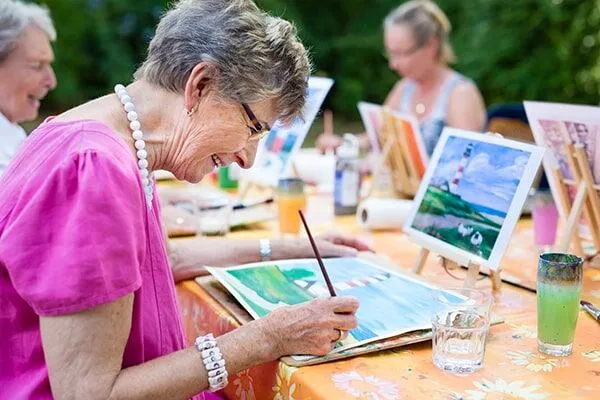How Art Therapy Helps Seniors with Cognitive Decline
When words become harder to find, art can often step in. For many older adults experiencing cognitive decline, traditional ways of communicating start to slip away. Conversations that used to come easily now require effort. But place a paintbrush in someone’s hand, or offer a box of pastels, and something changes, while in assisted living the expression returns, just in a different form.
Art therapy has become an increasingly valuable approach to supporting older adults with dementia or memory loss in senior living Phoenix. It’s not about creating masterpieces. It’s about connection, stimulation, and giving shape to thoughts that are often hard to explain.
Why art works when words do not
The parts of the brain responsible for artistic expression are often preserved longer than areas affected by memory loss. That means someone might not remember a name or date but can still mix colors, follow patterns, or shape clay with a deep sense of purpose.
Art can also be calming. The act of creating, whether through drawing or painting, gives the brain something to focus on. This focused attention helps reduce restlessness, frustration, or agitation, which are common challenges in cognitive decline.
No rules, no pressure
One of the best things about art therapy is that it meets people exactly where they are. Whether someone is still very verbal or has limited speech, the art becomes a language all its own. There is no right or wrong way to express yourself with paint, texture, or color. That freedom is powerful.
Simple activities with a big impact
Finger painting or sponge art
Watercolor on pre-traced paper
Shaping clay or using textured stamps
Collage with magazine clippings or fabric
Coloring mandalas or familiar images
These may sound basic, but the goal isn’t skill. It’s an engagement. It’s giving the person a space to respond to their inner world.
Family connection through creativity
Art therapy also creates opportunities for families to engage with loved ones in new ways.
Sitting together to paint or color allows for quiet companionship that doesn’t rely on conversation. It can reduce the pressure of “getting words right” and shift focus toward simply being present.
In well-supported retirement communities like Morningstar in Phoenix, programs that include art therapy are becoming more common. These sessions offer more than a pastime. They support self-worth, ease anxiety, and create small windows of clarity. Residents often show surprising focus and joy during these activities.
